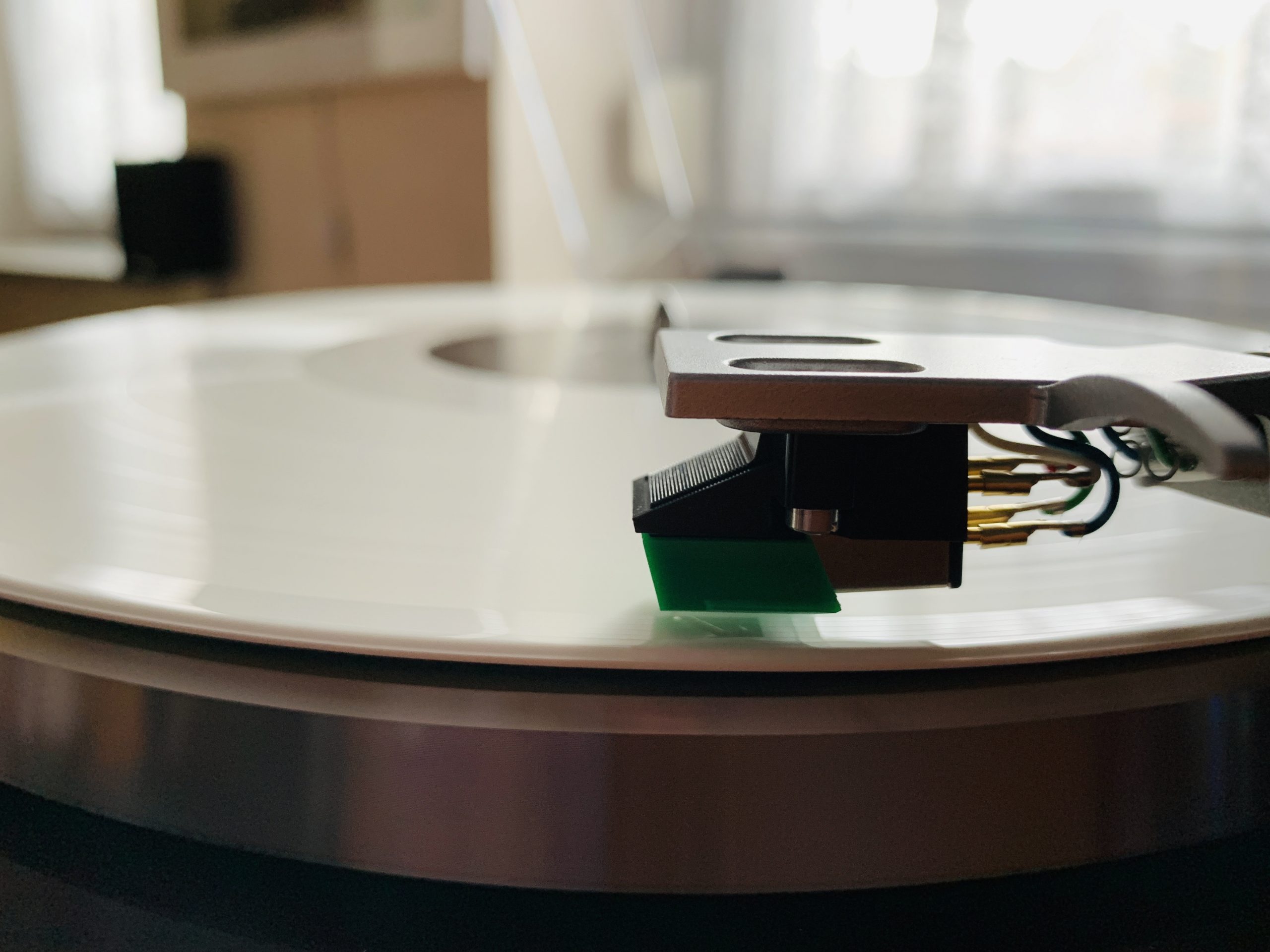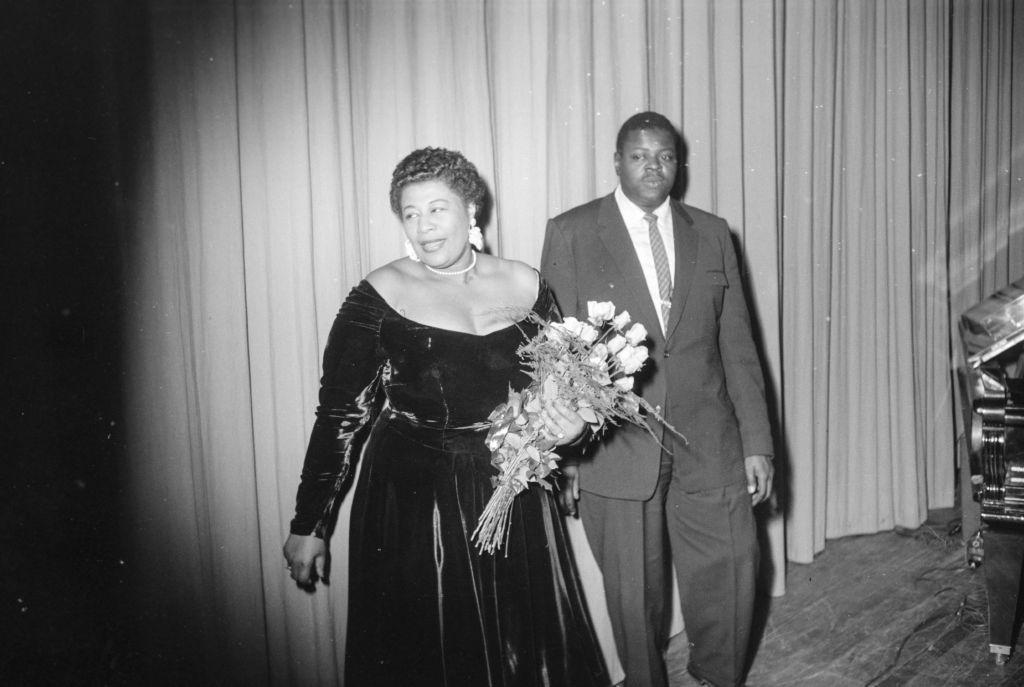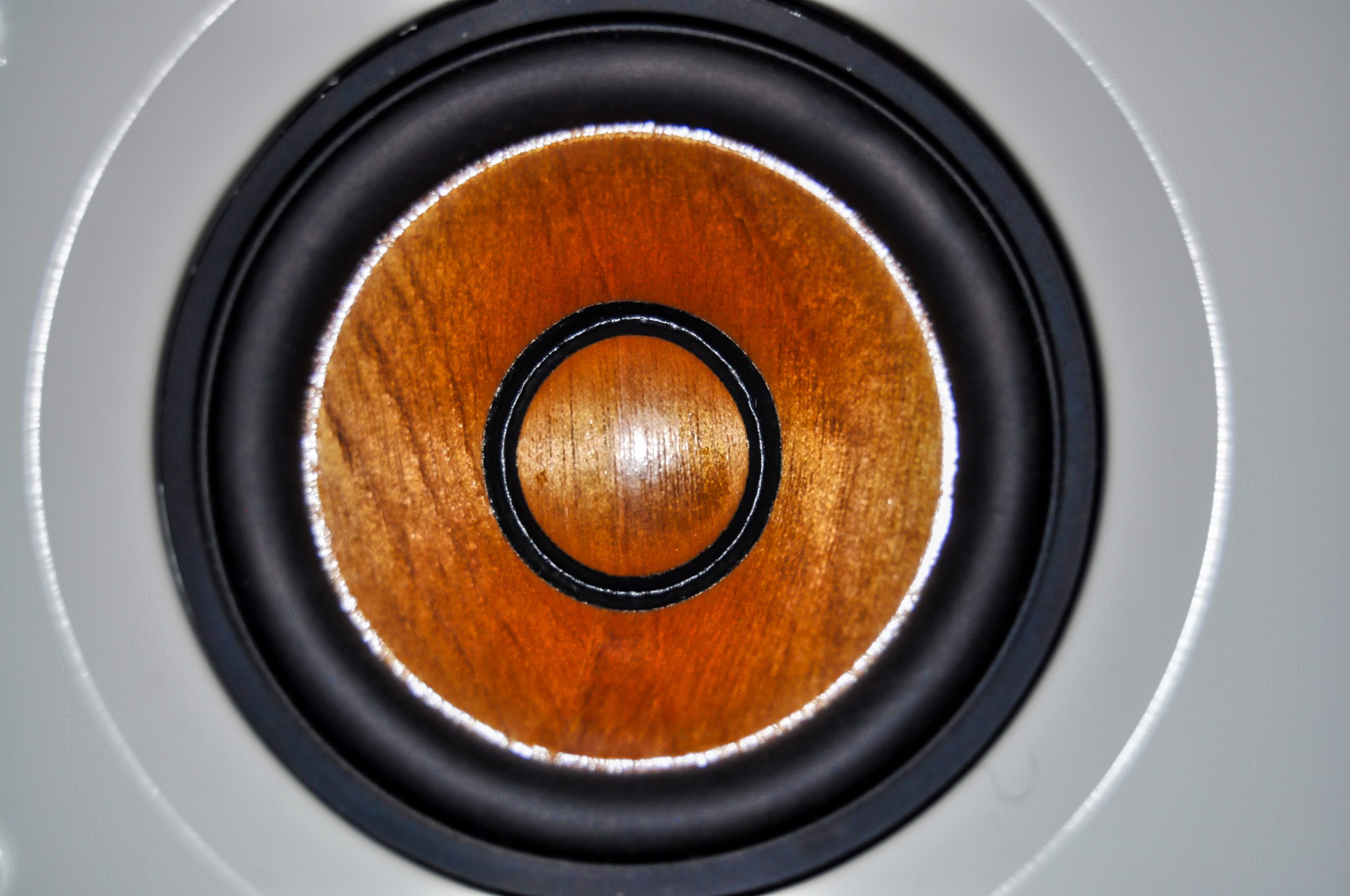When 12-year-old Ella Fitzgerald listened to Louis Armstrong‘s vinyl records, would she have dared to dream that she would one day become his singing partner? Although Ella Fitzgerald came from a humble background, a gramophone and a radio were part of the basic equipment in Ella Fitzgerald’s parental home. Her family attached great importance to music: Although a gramophone or a radio were strictly speaking far beyond the family’s financial budget – at that time, any form of music was a luxury item – the young Ella Fitzgerald didn’t miss out on any musical trend, her parents decided. Despite the early death of her mother – Ella Fitzgerald was just 15 years old – her mother is said to have made it possible for her daughter to learn a lot from a musical point of view.
At that time, there was a new musical trend that was to develop into a musical movement of superlatives: Jazz.
Heartland of swing
Ella Fitzgerald’s career began during the swing era, the golden age of jazz. In this era, for the first time, there was an opportunity to bring music that had previously been celebrated mainly in African-American cultural circles to the musical tastes of the masses. The Harlem district of New York was a stronghold of this early form of jazz. The swing movement crystallised from this early form of jazz: swing was more than a trend, a fashion or simply a new style of music. It was the reflection of the attitude to life of an entire generation of musicians.
Ella Fitzgerald was at the vanguard: On 21 November 1934, the decision was made about Ella Fitzgerald’s artistic career. After the death of her mother, she travelled non-stop through Harlem and performed as a dancer in all kinds of establishments. On that November day in 1934, Fitzgerald had planned to dance in a talent competition at the Apollo Theatre. However, when she learned that much more experienced dancers than she were to perform in the competition, she changed her mind and decided to sing.
The band leader Benny Carter was impressed by Fitzgerald’s clear intonation and her vocal range.
Chick Webb Orchestra
She was not to regret this spontaneous decision: the Benny Carter Orchestra, one of the most renowned jazz orchestras, was playing that evening. The band leader Benny Carter was so impressed by Fitzgerald’s clear intonation and her vocal range that he took her under his wing: Now the course was set for Ella Fitzgerald’s further artistic career.
On 15 February 1935, shortly after her discovery by Benny Carter, Ella Fitzgerald celebrated her debut at the Harlem Opera House. Subsequently, the singer became a member of the Chick Webb Orchestra, which was founded by the famous drummer Chick Webb (1905 – 1939). With his height of 4 feet 3 inches, Chick Webb did not at all correspond to the ideal image of a man at that time – Ella Fitzgerald did not correspond to any common ideal of beauty either, which almost became her undoing at the beginning of her career. The bandleader Fletcher Henderson is said to have rejected Fitzgerald before her debut at the Harlem Opera House because she did not meet his visual expectations.
But, with a few exceptions, in the swing era, physical aspects of an artist did not play a major role: what counted was the art of improvisation and the lifestyle typical of swing. In the thirties, anyone with artistic talent usually had a good chance of getting a job at one of the establishments in Harlem.
52nd Street
Ella Fitzgerald’s very first recordings date from her time with the Chick Webb Orchestra: On 12 June 1935, Ella Fitzgerald recorded I’ll Chase The Blues Away at Decca Studios in New York. Her activity for the vinyl record did not go unnoticed: in November 1936, bandleader Benny Goodman, who was at the height of his fame in the thirties, brought her into the studio for recordings. The golden age of music establishments in Harlem was over – the artists who made the leap to vinyl records could consider themselves lucky. New York’s entertainment centre shifted from Harlem to 52nd Street in downtown Manhattan, where countless jazz and swing clubs flourished in the following decades. Downtown Manhattan was a completely different neighbourhood from Harlem: not all artists who had success in Harlem were granted the opportunity to continue their careers on 52nd Street. With the economic decline in the thirties, it became increasingly difficult for jazz clubs to sustain themselves.
Scat singing became an elementary component of bebop with Ella Fitzgerald at the latest.
Scat singing
At the end of the thirties, Ella Fitzgerald celebrated her first recording successes with the Chick Webb Orchestra: after the early death of drummer Chick Webb, Ella Fitzgerald took over the leadership of the orchestra – this arrangement, however, only lasted a short time. After a few initial hits, Ella Fitzgerald’s singing was out of fashion by the early forties –the golden era of swing was over, the public had found new favourites in singers like Frank Sinatra. For a few years, singer Ella Fitzgerald was on the back burner, her career seemed to be over before it had even really taken off.
Bright spots at this time were hits like the jazz standard Flying Home, which Ella Fitzgerald recorded in 1945: Ella Fitzgerald’s characteristic scat singing characterised the interpretation of Flying Home. Since Ella Fitzgerald practised scat singing, all subsequent generations of scat singers had to measure themselves against her: scat singing, as Louis Armstrong already performed it in the 1920s, became an elementary component of bebop with Ella Fitzgerald at the latest: in the 1940s, bebop replaced swing as the decisive movement in jazz music.
Marilyn Monroe and Ella Fitzgerald
In the era of bebop, Ella Fitzgerald enjoyed countless successes: In the early fifties, Fitzgerald was in demand like never before and when she wasn’t in the recording studio, she could choose the stage she wanted to perform on. But Fitzgerald’s venues were mainly smaller jazz clubs rather than big stages. How did Fitzgerald come to be in demand on larger stages from the mid-fifties onwards?
A Hollywood star named Marilyn Monroe was not entirely uninvolved. In November 1954, Marilyn Monroe is said to have seen Ella Fitzgerald perform for the first time in Los Angeles – before that, Monroe had been advised to listen to Fitzgerald’s vinyl records in order to train her own singing style. When Monroe learned that Ella Fitzgerald was not getting an engagement at the prestigious Mocambo nightclub in West Hollywood, she made use of her influence as Hollywood Star….
Those who performed at the Mocambo in the fifties were in a different league in American show business: Stars like Edith Piaf, Frank Sinatra or Eartha Kitt were guests there.
Marilyn Monroe is said to have made an offer to the owners of the Mocambo: If the owners decided to hire Ella Fitzgerald, she would take a seat in the front row every night and bring her entire Hollywood entourage with her. In the fifties, there could be no better publicity stunt than Marilyn Monroe taking a seat in the front row of a nightclub every night.
This offer convinced the owners of the Mocambo: from 15 March 1955, Ella Fitzgerald made a guest appearance at the Mocambo for a few weeks. This engagement represented Ella Fitzgerald’s final breakthrough in show business: from then on, Ella Fitzgerald no longer had to worry about her financial or artistic future.
Ella Fitzgerald would never have become so famous had she not regularly reinvented herself.
The First Lady of Jazz
On 16 August 1956, the time had finally come: Ella Fitzgerald stood in the recording studio for the first time together with her childhood idol Louis Armstrong. For the album Ella and Louis, the two recorded some songs together that have stood the test of time: Today, the album Ella and Louis is considered the jazz album par excellence and has set standards.
Ella Fitzgerald would never have become so famous had she not regularly reinvented herself and adapted her musical repertoire to the pulse of the times: the end of the swing era in the early forties presented Ella Fitzgerald with a serious artistic challenge, which she mastered. In the following decades, Ella Fitzgerald toured the globe and performed in numerous European countries, among others – even the most intense exhaustion could not stop Fitzgerald from continuing to perform on stage and sing to her audience in the sixties. She also recorded a 19-song series of “Songbook” albums between 1956 and 1964: As part of these albums, Ella Fitzgerald recorded 250 works from the Great American Songbook, including works by Cole Porter, George Gershwin or Irving Berlin.
More than just a musical genre
When she wasn’t performing live on stage, she was almost certainly in the recording studio polishing her next record: the statement that Ella Fitzgerald was “the first lady of jazz” is entirely true: she was critically acclaimed primarily as the first lady of swing, then as the first lady of bebop, and finally as the first lady of the Great American Songbook. Without Ella Fitzgerald, US music culture would be poorer by one great – whole generations of jazz singers after her have taken her art as a model. When it comes to scat singing, Ella Fitzgerald is still the benchmark today – she embodied the jazz attitude to life like no other singer of her era. Jazz means more than just a musical genre: Ella Fitzgerald proved that.
Main sources: Kunz, Johannes: Ella Fitzgerald und ihre Zeit [Ella Fitzgerald And Her Time], 2016 LangenMüller publishing house & an article on Marilyn Monroe & Ella Fitzgerald via biography.com.
Cover picture: Jazz at the Philharmonic in Zürich, Ella Fitzgerald, Oscar Peterson, 14.02.1955
Picture credit: ETH-Bibliothek Zürich, Bildarchiv / Photographer: Metzger, Jack / Com_L04-0031-0006 / CC BY-SA 4.0

 Deutsch
Deutsch







